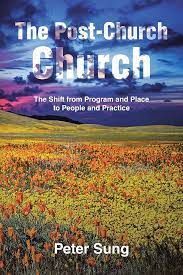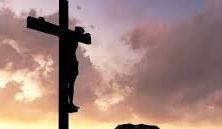The Post-Church Church
Josh Cramer • February 4, 2024
A book review of The Post-Church Church

(First, I need to acknowledge that Peter Sung is a friend and a mentor within our denomination, the Evangelical Covenant Church. Second, I need to also acknowledge that when I first heard Peter talk on this topic, I immediately asked him when there would be a book and if he would come speak to our community. I was an early fan of the ideas that eventually became this book and I make no claim to objectivity.)
When the Covid-19 pandemic hit in 2020, I was down with mono. I was dealing with internalized shame, with ministry burnout, and with unresolved church conflict. And then I was diagnosed with mono. When the pandemic hit, I felt like the world was slowing down to the pace I had been stumbling at for the previous two and a half months.
When the pandemic ended, I was involved in a new church plant with new ministry partners and a completely deconstructed understanding of ministry. Very few of my previous categories were going to work. Our team has been feeling our way toward celebrating Christ’s rule in unfamiliar ways. We’ve been relying on a combination of Spirit-led intuition, creative invention, and leaning on ancient traditions. We’re trusting Scripture and trying to keep our eyes on Jesus, but we’ve found almost no guides who can help us to incorporate the lessons of the last several years. Who has integrated what we need to know after the pandemic, the Trump-evangelical phenomenon, the 2020 racial justice movement, and The Rise and Fall of Mars Hill
podcast (and other stories of moral failures and abuses from powerful men in church leadership)?
Peter Sung has. The Post-Church Church: The Shift from Program and Place to People and Practice
comes to us just when we need it. For those with eyes to see, Sung’s book will help orient us into the way of being that the Spirit is calling forth from this moment.
Sung centers the book on the idea that the pandemic acted as a wildfire, burning down old models and ways of doing church, and, as a superbloom follows a wildfire, so will there be new life to emerge in the wake of the pandemic. While we’ve seen many church communities try to “just get back to the way things were”, the Spirit is drawing God’s people into new ways of being, as has happened at key moments throughout Christian history. This is a moment! And if we are prepared ground, open to the Spirit’s new work in us, we will have the joy of participating in the abundant new life springing up around us.
Sung organizes the book in three parts. The first two look at what has been burned away and why; the third explores some ways that the church might step into the new landscape and join in the superbloom. In Part 1, Wildfire in the Church, Sung notes the decline that had been underway in the church for years—suggesting that it’s been time for a new paradigm for a long time—and explores how the pandemic brought about the needed paradigm shift, noticing the revealing, accelerating, forcing, flattening, focusing impacts of the pandemic on churches. In Part 2, `Wildfire in Society, Sung looks at the societal disruptions that have led to the paradigm shift and describes a theory that explains why things are changing. I found Part 2 helpful as a primer on what kinds of diseases needed to be removed from the church and how they were exposed. The three disruptions Sung notes are Trump’s presidency, the pandemic, and George Floyd’s murder and the ensuing protests. The theory of change that Sung describes is the breaking of the white bubble, the move from a white-majority culture to a minority-majority culture. The shifts all deal with power, and so Sung invites the church to move away from power in the way of Jesus.
The heart of the book—and the chapters that moved my soul and stirred my imagination—are in Part 3, Recommended Shifts for the Church. In chapter 5, Renegotiations, Sung looks at four fields in which the church needs to explore change: construct (that is, our model of doing church), meaning (where we find meaning—in numbers and programs, or in people and practice?), theology, and power. The final four chapters look at ways of orienting our renegotiations. Chapter 6, Essential, centers church theology on Jesus, the cross, and the resurrection, rather than trying to be and say everything about everything. Chapter 7, Relational, describes attunement and casts a vision for a church that finds meaning in being attuned to ourselves and those around us. Chapter 8, Humble, points to the kind of leadership and church community that lives out power as Jesus did. Chapter 9, Supernatural, invites us to welcome God’s leading and power rather than our own, old resources. Part 3, then, helps us to pay attention to what has been burned away and then to shift our eyes and work toward cultivating the new life that the Spirit is causing to grow.
I have several favorite moments. I was grateful to see that Sung predicts humble leadership as the way forward for pastoral ministry, as CEO models of ministry die out. I am challenged to think about how relational attunement might remain a key pastoral practice. And I value the move toward essentials. Christians keep losing focus on Jesus and leaders aren’t helping by distracting us from our mission, pulling up our roots in the cross and resurrection to lead us toward a power-seeking politics. Sung is constantly tilling the ground and inviting us to imagine how the church that follows Jesus might operate in our time.
Sung is an expert in leadership, organizational psychology, church planting and coaching, and brings an immigrant perspective to America’s church culture. More than anyone I know, he is perfectly positioned to see what is happening in the American church and to explore ways forward. He is both part of the landscape and a keen observer of it. And with Post-Church Church, he has given us a resource for participating in the work that the Spirit is doing to cultivate the ground and bring new life out of the mess of the last several years. He writes clearly, making his points effectively and then moving along. He incorporates resources from all his fields of expertise, with plenty of research and insights from others, and weaves together his observations into a straightforward and intuitive story, held together by the metaphor of wildfire and superbloom. And his insights land like the bursting of a new field of flowers in a charred landscape. As is often the case when I catch a beautiful vision, when I finished Post-Church Church, I found myself seeing more clearly, with new imagination, and excited to follow Jesus into this new moment.
My struggles with the book: first, it has no table of contents, so I had to write out my own in the blank pages at the back. It would have helped me organize my thoughts. I appreciated the brevity of the book, but a table of contents seemed like an unnecessary cut. Second, and related to the content, I have questions about what counts as “essential”. I agree with the focus on essentials, with a shift from trying to say everything about everything and from pastors to try to speak expertly outside of our vision and training, but I don’t know where those lines land. How do we think through the relationship between politics and gospel? What about our racialized culture and gospel? Or Jesus and sexuality? I think there are ways for church communities to be engaged in the conversations—and I suspect that Sung would agree—without stepping out of our lanes but I don’t have more clarity on where the lines are from Post-Church Church.
All that said, this is an extremely timely and helpful resource for a church that appears to be trying to figure out how to move on from crisis. While a lot of church leaders are working to go back to old models and ways of being—back to an old forest full of diseased trees—many of us want to see the Lord glorified in new growth. Sung has given us a gift. I pray that we might follow the Spirit’s leading into a church that is essential, relational, humble, and filled with God’s supernatural power, moving from old dying models into the superbloom. For church planters, church leaders, and those disillusioned with the church as it has been, The Post-Church Church
feels like the buds of new life, like spring after a long, hard winter.

This is how I remember Lent as a kid: go to mass on Ash Wednesday (I have no memory of any sermon, lol), vow to give up something (that lasted as long as a New Year’s resolution), and eat Long John Silver’s fried fish on Fridays (their hushpuppies and crunchies…mmmm). We didn’t eat meat on Fridays (unless we forgot, but we prayed, so it was ok); it was something everyone in the church did, right? I knew it was leading up to Easter--other than that, I had no real understanding or connection to it. Lent was taught more like an obligation rather than an opportunity. An opportunity to reflect, rejoice, rest, repent (what other “r” words can we think of?) on Christ’s journey to the cross. The next 40 days is an opportunity, an invitation to draw closer to the Giver of Life. For some, this might look sacrificial (giving something up), for others it might be a genesis (starting something new), or it can be a combination of the two. “Your kingdom come, Your will be done, On earth, As it is in heaven” Our Lord doesn’t just teach us to pray, he embodies prayer. He inaugurates God’s kingdom on earth through his presence with us; through his faithful obedience, we get to see and experience heaven on earth. This does not come without temptation, and trials, and wandering astray at times—yet our loving God invites. He invites us to remember, to reengage with the One who creates and holds all things; He invites us to lay down our lives and pick up our crosses. We want to invite you to participate with RCB, as we journey with Christ to Calvary, praying for the strength to be obedient… Your kingdom come, Your will be done, On earth, As it is in heaven.









